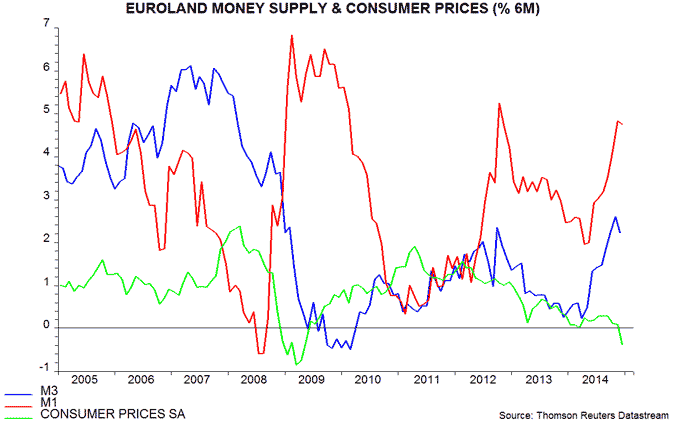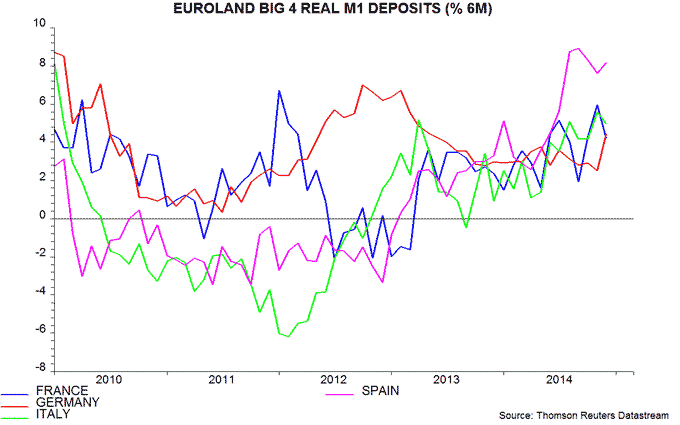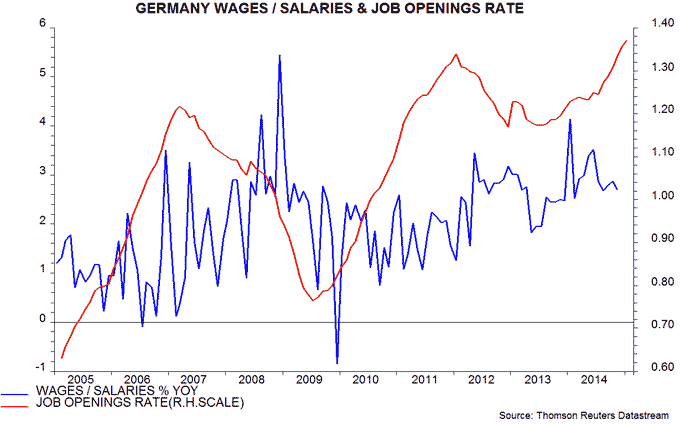Eurozone money trends still upbeat
Eurozone six-month real money growth continued to strengthen in December, supporting the optimistic view here of economic prospects – see also yesterday’s leading indicator report.
The monthly rise in narrow money M1 slowed to 0.3% last month, while the broad M3 measure was unchanged from November. Six-month growth rates, however, remained solid, at 4.8% and 2.2% respectively (9.7% and 4.5% annualised), reflecting strong gains in prior months.
Real growth was boosted by an energy-driven fall in consumer prices in December. Six-month real M1 expansion is now the highest since October 2009, and M3 expansion since February 2009. Real bank lending is also finally growing – see first chart. (The money supply leads the economic cycle, while lending is coincident / lagging.)
Sceptics argue that real money acceleration due to falling prices is not a positive economic signal. There are two responses. First, the recent pick-up in real money growth mainly reflects faster nominal expansion rather than weaker prices – second chart. Secondly, economic growth has strengthened after previous occasions when real money has been boosted by a decline in prices. A surge in real M1 in 2008-09, for example, was also partly due to a fall in energy costs but correctly signalled a strong economic rebound in 2009-10.
The country deposit breakdown shows solid real narrow money trends across the big four economies. Six-month growth in real M1 deposits remains fastest in Spain; Germany had been lagging but caught up with France last month – third chart.
Previous posts argued that QE had limited impact on monetary growth in the US, UK and Japan because it partly involved banks swapping securities for idle reserves at the central bank. The coming ECB programme could be more effective because rising excess reserve holdings will be penalised via the negative deposit facility rate, giving banks a greater incentive to expand lending.
In other Eurozone news today, German unemployment on an internationally-standardised definition fell to a new post-reunification low of 4.8% in December, with a corresponding further rise in the job openings (vacancies) rate. The labour market in Germany appears tighter than in the US / UK, suggesting greater upward pressure on wage growth – fourth chart.

Reader Comments